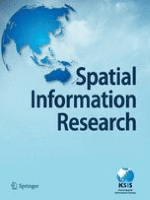
Spatial Information Research
Scope & Guideline
Advancing the frontiers of spatial data science.
Introduction
Aims and Scopes
- Spatio-temporal Analysis:
The journal frequently publishes research that investigates changes over time and space, focusing on patterns and dynamics in environmental and urban contexts. - Remote Sensing Applications:
Utilization of satellite imagery and aerial data to assess and monitor environmental changes, land use, and natural disasters is a core focus. - Machine Learning and AI in Spatial Analysis:
There is a significant emphasis on incorporating machine learning techniques for predictive modeling and data analysis within spatial contexts. - Environmental and Ecological Studies:
Research often addresses ecological risk assessments, biodiversity, and the impact of climate change on spatial phenomena. - Urban Planning and Management:
The journal covers studies related to urban development, land use planning, and the effects of urbanization on the environment. - Public Health and Spatial Epidemiology:
A growing area of publication focuses on the spatial aspects of public health, including the analysis of disease spread and health resource allocation.
Trending and Emerging
- Integration of AI and Big Data:
The use of artificial intelligence and big data analytics in spatial research is on the rise, particularly for predictive modeling and real-time monitoring. - COVID-19 Related Research:
A significant increase in studies related to the spatial dynamics of COVID-19 has been noted, examining its impact on various social and environmental factors. - Sustainable Urban Development:
Research focusing on sustainable practices in urban planning and management has gained traction, reflecting a global shift towards sustainability. - Climate Change Adaptation Strategies:
There is a growing emphasis on research that explores adaptive strategies for mitigating the impacts of climate change on various spatial scales. - Geospatial Technologies in Public Health:
Emerging studies are increasingly applying geospatial technologies to address health disparities and optimize resource allocation in public health.
Declining or Waning
- Traditional Statistical Methods:
There has been a noticeable decrease in studies relying solely on traditional statistical methods for spatial analysis, as more researchers turn to advanced computational techniques. - General Land Use Studies:
Broad studies on land use without a specific focus on spatial dynamics or technological integration have become less frequent, replaced by more detailed analyses. - Static Spatial Models:
The reliance on static models that do not incorporate real-time data or dynamic changes in spatial phenomena is waning as the field moves towards more adaptive and predictive approaches.
Similar Journals

International Journal of Health Geographics
Unlocking the power of geography in public health.International Journal of Health Geographics is a premier open access journal published by BMC, dedicated to advancing the field of health geography by facilitating the dissemination of research that intersects health, the environment, and geographic information systems. Since its inception in 2002, the journal has become a vital resource for scholars and practitioners in public health, environmental science, and spatial data analysis, consistently ranking in the Q1 category across multiple disciplines, including Public Health, Business Management, and Computer Science. With an impressive Scopus ranking of #39/665 in Public Health and a notable 94th percentile standing, the journal is committed to publishing high-quality, impactful research that addresses current public health challenges through a geographic lens. Its open access model ensures that knowledge is readily available to researchers, policymakers, and the public, reinforcing its role as a key contributor to evidence-based decision-making in health and environmental policies. As it converges through 2024, the International Journal of Health Geographics continues to be an essential publication for advancing interdisciplinary understanding and promoting innovative solutions in health geography.
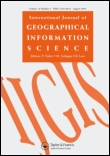
INTERNATIONAL JOURNAL OF GEOGRAPHICAL INFORMATION SCIENCE
Pioneering Research in Geographical Information SystemsThe INTERNATIONAL JOURNAL OF GEOGRAPHICAL INFORMATION SCIENCE, published by TAYLOR & FRANCIS LTD, stands as a premier platform in the fields of geography, planning and development, and information systems. With an impressive impact factor and recognized as a Q1 journal in 2023 across multiple categories, this esteemed publication underscores its significant role in advancing knowledge and application in geographical information sciences. Since its inception in 1997, the journal has provided vital insights and research findings, appealing to a diverse audience of researchers, professionals, and students dedicated to exploring the complexities of spatial data and its implications. Notably, it boasts exceptional Scopus rankings, positioning it among the top journals in its fields. While the journal does not offer open access, it remains a crucial resource for those looking to deepen their understanding and engagement with contemporary geographic and information science issues.

GEOINFORMATICA
Innovating Research in Spatial Data AnalysisGEOINFORMATICA is a leading journal in the field of geoinformatics, widely recognized for its contributions to both Geography, Planning and Development as well as Information Systems. Published by Springer, this journal holds a distinguished Q1 ranking in Geography and a Q2 ranking in Information Systems as of 2023, reflecting its high-impact research contributions and authoritative voice in these disciplines. Since its inception in 1997, GEOINFORMATICA has provided a platform for innovative research, methodologies, and applications related to geographic information science, spatial data analysis, and remote sensing technologies. The journal's rigorous peer-review process and strategic positioning within the academic landscape allow it to attract a diverse array of publications, assisting researchers, professionals, and students in understanding complex spatial phenomena. While the journal does not offer Open Access, it remains a vital resource located in the Netherlands, and its indexed status has secured impressive Scopus rankings—#131 in Geography, Planning and Development, and #134 in Information Systems, showcasing its robust scholarly influence. Explore the latest developments and cutting-edge research through GEOINFORMATICA, where scholarly excellence converges with real-world relevance.

PAPERS IN REGIONAL SCIENCE
Fostering collaboration for impactful regional science.PAPERS IN REGIONAL SCIENCE, published by Wiley, is a leading international journal dedicated to advancing the understanding of regional science and interdisciplinary approaches to geography and environmental planning. With an impressive impact factor and a prestigious Q1 ranking in both Environmental Science and Geography, Planning and Development, this journal serves as a critical platform for disseminating high-quality research from 1955 to 2024. Covering a diverse scope including regional development, spatial analysis, and environmental issues, it facilitates discussion and knowledge exchange among scholars and practitioners. The journal is recognized for its rigorous peer-review process and its commitment to addressing pressing societal challenges through research. As a vital resource for researchers, professionals, and students alike, PAPERS IN REGIONAL SCIENCE fosters innovation and collaboration within the field, contributing to a deeper understanding of the complexities of regional systems.

Visnyk of V N Karazin Kharkiv National University-Series Geology Geography Ecology
Bridging disciplines to enhance our understanding of Earth's systems.Visnyk of V N Karazin Kharkiv National University-Series Geology Geography Ecology is a prominent academic journal dedicated to the fields of geology, geography, and ecology. Published by the esteemed V N Karazin Kharkiv National University, this journal aims to disseminate high-quality research findings and theoretical perspectives that advance understanding in these critical scientific areas. With the ISSN 2410-7360 and E-ISSN 2411-3913, it serves as a vital platform for scholars, researchers, and students striving to contribute to environmental science and sustainable development. The journal promotes open access, ensuring that research is readily accessible to a broad audience, thus facilitating the exchange of knowledge across borders. Its commitment to scholarly excellence makes it an essential resource for anyone engaged in the study of Earth's systems and their interconnections. For additional information and to submit your research, please visit the journal's website.
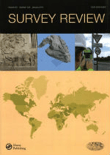
SURVEY REVIEW
Pioneering Scholarly Communication Since 1963SURVEY REVIEW is a distinguished journal published by Taylor & Francis Ltd, focusing on a diverse range of disciplines including Civil and Structural Engineering, Computers in Earth Sciences, and Earth and Planetary Sciences. With an ISSN of 0039-6265 and an E-ISSN of 1752-2706, this journal has been a vital resource for scholarly communication since its inception in 1963. Positioned within the Q2 and Q3 quartile categories according to the latest rankings, it is recognized for its significant contributions to advancing knowledge in multiple fields, specifically holding a rank of 64/159 in Earth and Planetary Sciences and 32/73 in Computers in Earth Sciences. Researchers, professionals, and students benefit from its critical insights into complex engineering and scientific challenges. Although SURVEY REVIEW is not open access, it remains a highly cited journal, making it an essential avenue for disseminating pivotal findings that impact both academia and industry practices.
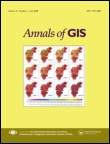
Annals of GIS
Bridging Theory and Practice in GISWelcome to the Annals of GIS, a leading academic journal published by Taylor & Francis Ltd, dedicated to advancing the field of Geographic Information Science and its applications. With an ISSN of 1947-5683 and an E-ISSN of 1947-5691, this Open Access journal has been ensuring wide accessibility since 2019, thereby bolstering the dissemination of knowledge in areas such as remote sensing, spatial analysis, and geoinformatics. Hailing from the United Kingdom, the journal ranks impressively within its categories, achieving a Q2 status in Computer Science Applications and a prestigious Q1 ranking in Earth and Planetary Sciences for 2023, placing it in the top 10% among its peers. With a focus on innovative research spanning from 2009 to 2024, the Annals of GIS serves as a vital platform for researchers, professionals, and students alike, providing insights and fostering discussions that push the boundaries of geographic technologies and their real-world applications.
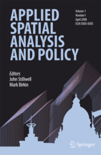
Applied Spatial Analysis and Policy
Empowering decision-makers through spatial analysis.Applied Spatial Analysis and Policy, published by Springer, is a leading journal dedicated to advancing knowledge in the field of spatial analysis and its application in policy-making. With an ISSN of 1874-463X and an E-ISSN of 1874-4621, this peer-reviewed journal has been at the forefront of geographical research since its inception in 2009 and continues to thrive with a convergence extending to 2024. As a recognized publication in the Geography, Planning and Development category, it holds a commendable Q2 quartile ranking for 2023 and is positioned at rank #238 out of 821 in the Scopus classification, reflecting its strong impact and relevance within the academic community with a percentile of 71. The journal provides a robust platform for researchers and professionals to explore innovative methodologies and empirical studies that enrich spatial policy frameworks. While access to individual articles is not open access, its significant contribution to the field makes it a vital resource for anyone involved in spatial analysis and related disciplines.
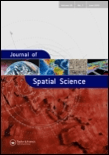
Journal of Spatial Science
Fostering Innovation in Geography and Environmental ScienceThe Journal of Spatial Science, published by Taylor & Francis Ltd, serves as a prominent platform for the dissemination of research in the interdisciplinary fields of geography, atmospheric science, and energy. With an ISSN of 1449-8596 and an E-ISSN of 1836-5655, this journal has established itself as a vital resource since its inception in 2004, boasting an impressive convergence period extending to 2024. Recognized in the Q3 quartile for Atmospheric Science and Energy (miscellaneous), and achieving a Q2 classification in Geography, Planning and Development in 2023, the journal not only reflects the evolving complexities of spatial science but also underscores its increasing relevance in addressing contemporary global challenges. The journal holds a commendable position in Scopus rankings, with notable placements in various categories, further highlighting its academic significance. Researchers, professionals, and students are encouraged to engage with the rich content offered, as the Journal of Spatial Science remains committed to advancing knowledge and fostering discussions pertinent to spatial analysis and its applications.
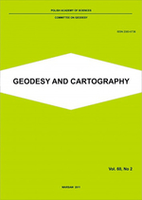
Geodesy and Cartography
Exploring the Frontiers of Geodesy and CartographyGeodesy and Cartography, published by the Polska Akademia Nauk (Polish Academy of Sciences), is a premier open-access journal dedicated to advancing the fields of geodesy, cartography, and geographic information science. Since its inception in 2010, the journal has provided a vital platform for researchers, professionals, and students to share their findings, fostering innovation and collaboration in these critical areas of study. With its ISSN 2080-6736 and E-ISSN 2300-2581, the journal is accessible to a global audience, ensuring that cutting-edge research is readily available to enhance scientific understanding and application. The journal not only serves as a repository of knowledge but also aims to contribute to the development of best practices and methodologies within geospatial sciences, making it an essential resource for anyone invested in the ever-evolving landscape of mapping and spatial data analysis.